00:55
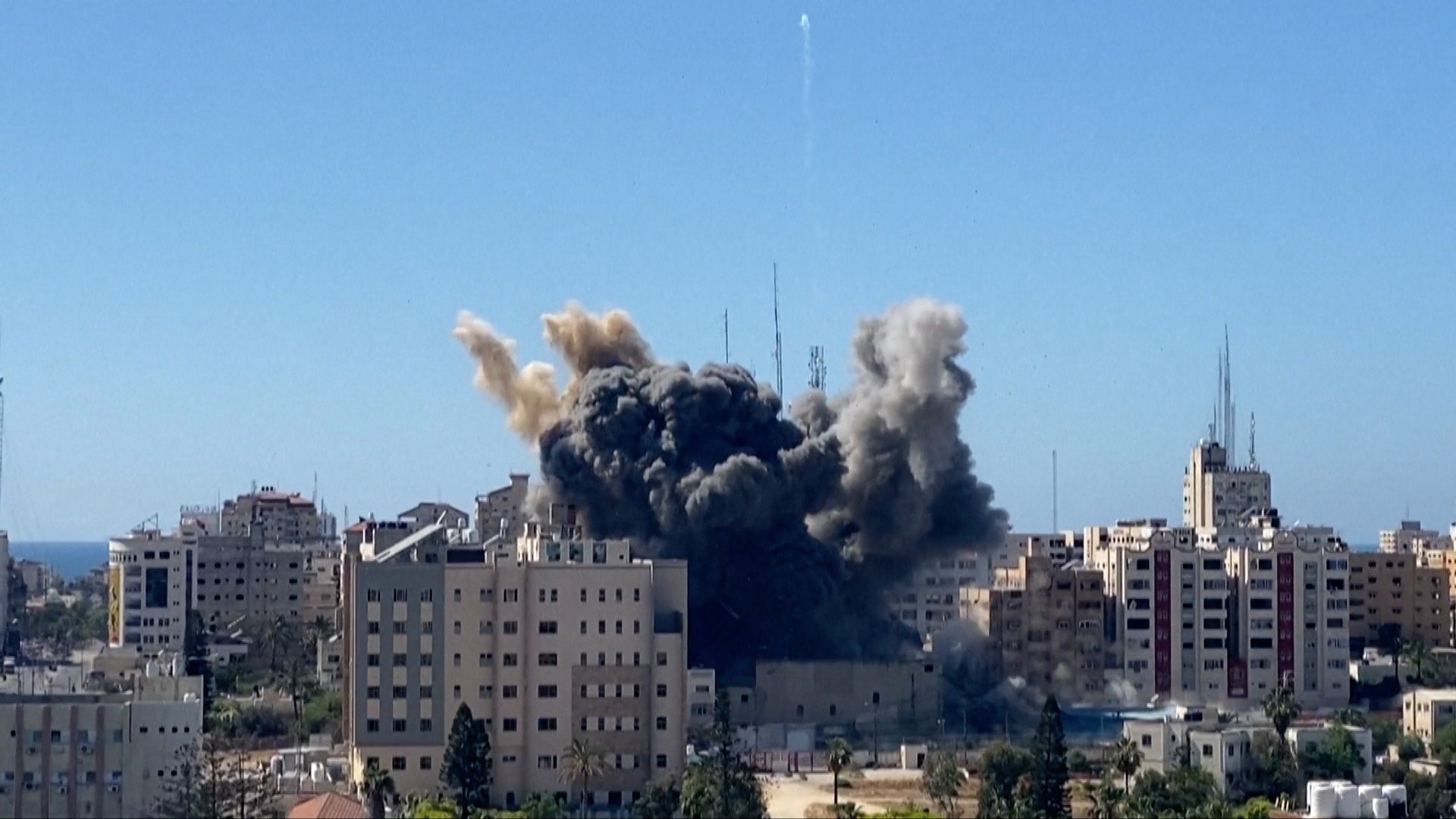
Media offices reduced to rubble, alleged "manipulation" of the press to trick the enemy: Many are concerned truth could become yet another casualty of Israel's military campaign in Gaza.
On Saturday afternoon, the owner of the 13-story Jala Tower housing Qatar-based Al Jazeera television and the U.S. news agency The Associated Press received a troubling call from the Israeli forces.
Jawad Mehdi said an Israeli intelligence officer warned him he had just one hour to ensure that the building was evacuated, and his plea for "10 extra minutes," broadcast live by Al Jazeera, was denied.
Israeli defense officials claimed the building housed not only news bureaus but offices of the Islamist Hamas which controls the Gaza Strip.
Within seconds, journalists scrambled to gather as much of their equipment and belongings as they could, then fled, some running down the stairs, others using the cramped lift.
Al Jazeera then broadcast live footage of the air strike that destroyed the building, sending a huge mushroom cloud of dust and debris billowing into the sky.
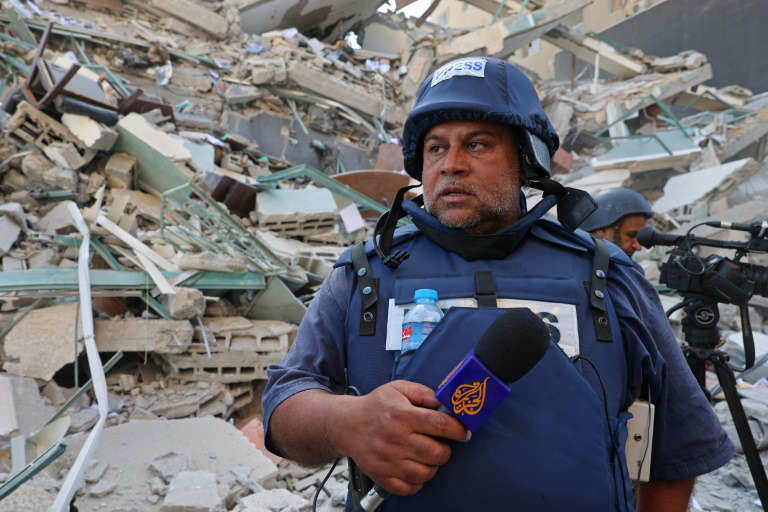
An Al Jazeera journalist stands before the ruins of the Jala Tower, which had housed international press offices until it was destroyed in an Israeli airstrike, in the Gaza Strip, May 15, 2021. /AFP
An Al Jazeera journalist stands before the ruins of the Jala Tower, which had housed international press offices until it was destroyed in an Israeli airstrike, in the Gaza Strip, May 15, 2021. /AFP
Israeli Prime Minister Benjamin Netanyahu on Sunday defended the strike.
"An intelligence office for the Palestinian terrorist organization (was) housed in that building that plots and organizes the terror attacks against Israeli civilians," Netanyahu told CBS News.
"So it is a perfectly legitimate target. I can tell you that we took every precaution to make sure that there were no civilian injuries, in fact, no deaths."
Israel has demolished several other towers in Gaza in deadly air strikes since Monday which it says targeted Hamas bomb-making facilities and the homes of senior militant commanders in response to rocket attacks.
But the latest attack triggered a storm of condemnation, with some accusing Israel of trying to "silence" media coverage of Gaza, where dozens of children are among the hundreds killed.
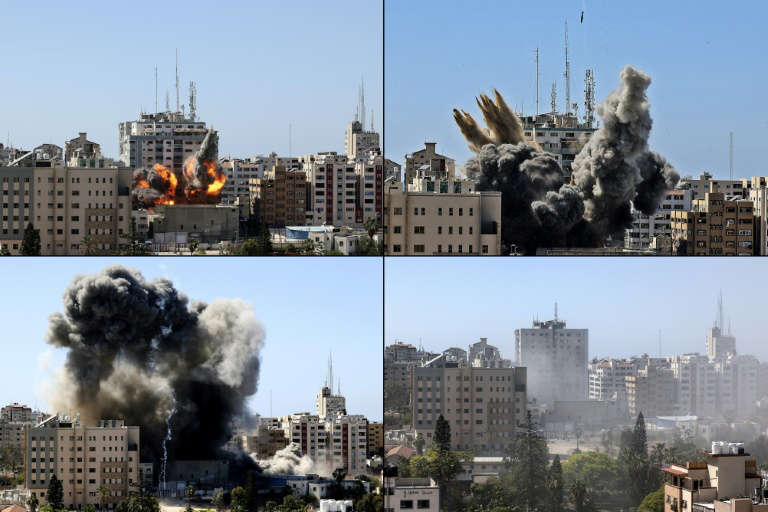
This combination of pictures shows the Jala Tower housing international media outlets in Gaza City being hit by an Israeli air strike and collapsing, May 15, 2021. /AFP
This combination of pictures shows the Jala Tower housing international media outlets in Gaza City being hit by an Israeli air strike and collapsing, May 15, 2021. /AFP
The New York-based Committee to Protect Journalists demanded from the Israeli government a "detailed and documented justification for this military attack."
"This latest attack on a building long known by Israel to house international media raises the specter that the Israel Defense Forces is deliberately targeting media facilities in order to disrupt coverage of the human suffering in Gaza," said CPJ executive director Joel Simon.
"Journalists have an obligation and duty to cover unfolding events in Gaza and it would be illegal for the IDF to use military means to prevent it."
Israel's actions have baffled and shocked journalists who had already been trying to come to terms with another bizarre incident that happened just after midnight on Thursday.
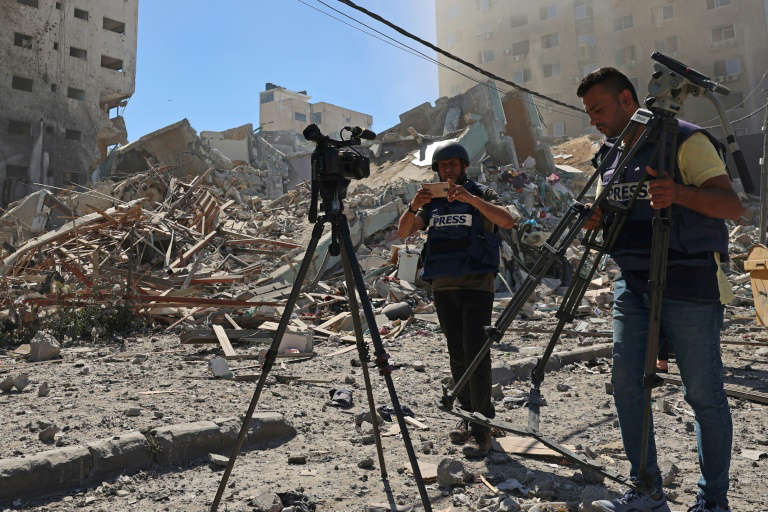
An Israeli air strike demolishes a 13-floor building housing Qatar-based Al Jazeera television and American news agency The Associated Press in the Gaza Strip, May 15, 2021. /AFP
An Israeli air strike demolishes a 13-floor building housing Qatar-based Al Jazeera television and American news agency The Associated Press in the Gaza Strip, May 15, 2021. /AFP
The Israeli army sent foreign media correspondents a WhatsApp message saying that its troops had entered Gaza.
Some media including AFP and The New York Times contacted army spokesman John Conricus to confirm the message.
"Yes, our troops are in Gaza," he replied.
But two hours later the army clarified that its troops had not entered the Gaza Strip, blaming an "internal communication" problem for the confusion.
Was it "manipulation"? Did the Israeli army deliberately mislead the media?
The last major Israeli ground operation in the Hamas-controlled Gaza Strip, home to two million inhabitants, took place in 2014.
Since then, Hamas has built a network of underground tunnels to allow its fighters to move across Gaza unhindered and unseen by Israeli surveillance cameras and spy aircraft.
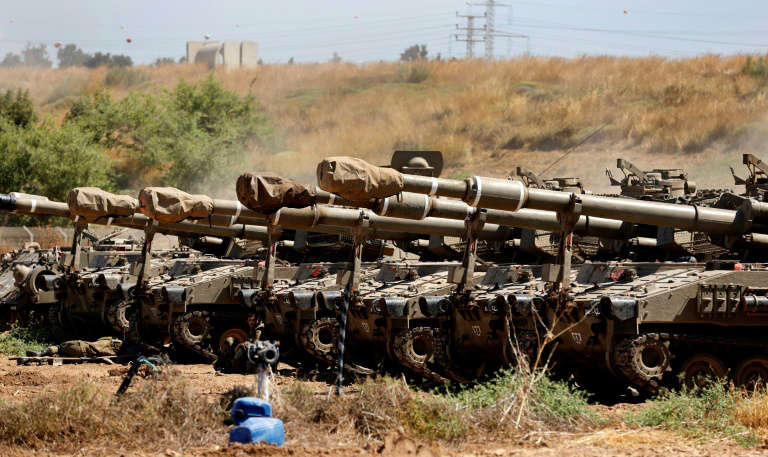
Israeli tanks are pictured at their position along the border with the Gaza Strip, May 15, 2021. /AFP
Israeli tanks are pictured at their position along the border with the Gaza Strip, May 15, 2021. /AFP
Overnight Wednesday to Thursday, Israeli drones and aircraft flew over Gaza to strike those tunnels.
The next day, local media reported that the army's reported ground offensive had been a ploy aimed at allowing Israeli jets to hit the tunnels and kill fighters who sought cover inside them.
"According to reports, due to the deployment along the border and the news coming out in the foreign media of a ground incursion, Hamas and Islamic Jihad sent their first line of defense into the tunnels to start taking up positions," wrote the Jerusalem Post.
"These were the anti-tank missile teams and mortar squads meant to strike at incoming Israeli ground forces," it added.
On Friday, the Israeli army said its overnight assault on Gaza involved fighter jets and tanks hitting a Hamas tunnel network dug under civilian areas.
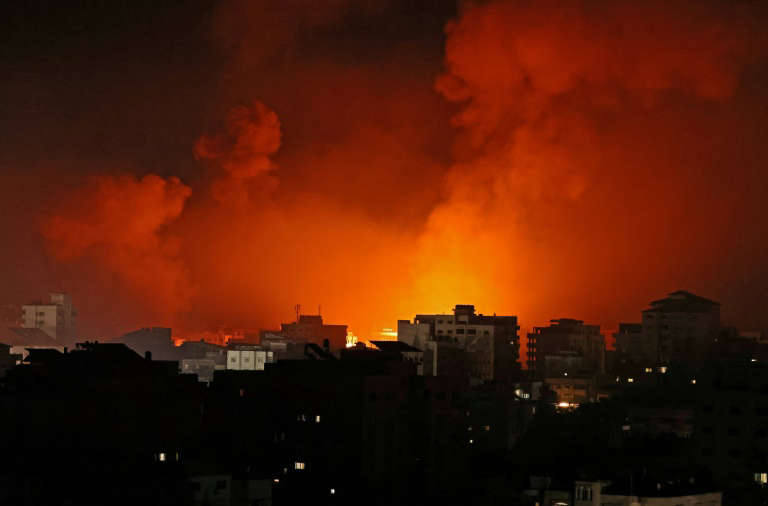
Smoke billows from a fire following Israeli airstrikes on multiple targets in Gaza City, controlled by the Palestinian Hamas movement, early on May 16, 2021. /AFP
Smoke billows from a fire following Israeli airstrikes on multiple targets in Gaza City, controlled by the Palestinian Hamas movement, early on May 16, 2021. /AFP
In September 2019, Israel's army faked wounded among its ranks in a skirmish with Lebanon's Hezbollah in a bid to trick fighters of the Iran-backed group into thinking their mission was accomplished and to cease fire.
Did the army this week really want to use the media to then bombard Hamas fighters in tunnels? Or was the erroneous report of a ground operation inside Gaza, as the IDF said, "an honest mistake"?
The Foreign Press Association in Israel on Saturday voiced its "outrage" and called on the army to explain what happened.
In its reply, the IDF apologized "for the error."
"Despite conspiratorial reports to the contrary in both international and Israeli press, this was not some elaborate attempt to manipulate the media in order to achieve a tactical victory," the IDF said.
Source(s): AFP

